|
Clients and friends often assume that because I am a mediator, I excel at working out conflict within my own family. I tell them that mediation skills are valuable in everyday life and help navigate conflicts, improve communication, and foster better relationships. Here's how you can apply mediation skills in your daily interactions wherever you are:
Mediation is a learned skill that takes time to develop and refine. The more you practice these techniques in your daily life, the more effective you'll become at handling conflicts and fostering positive relationships.
0 Comments
I'm thrilled to share this guide 'Survive and Thrive Through Divorce" written by my colleague, therapist Lisa Herrick, Ph.D. For more information about Lisa, who is also a collaborative divorce coach, child specialist, and parenting coordinator, check out her website at lisaherrick.com. Take heart: there are ways to protect yourself and any children involved, and prepare for more joyful chapters ahead, by guest blogger Lisa Herrick, Ph.D.  Need to know When my former husband and I finally agreed to divorce, our ending was more of a mutual ‘I give up!’ moment than an explosion that blew us apart. We’d been struggling for so long – fighting, living without affection or sex, trying one couples therapist after another – yet here we were on the same page at last. However, beneath the surface calm, I was hurting intensely. I suspected he was going to return to the girlfriend he had been seeing. I was filled with an excruciating sort of grief, made up of some parts pure sorrow, some parts intense anxiety about our children and the future, and some parts persistent rage. I walked around with a thought bubble floating above my head: ‘What’s going to happen next? How the heck am I going to recover from this?’ In this Guide, I’m going to explore the answers to those questions based on my own experience of living through divorce, as well as what I have learned from relevant social science research, and from my 30 years as a psychologist working with others navigating these stormy waters. I will be offering both concrete suggestions for adjusting and adapting to life after a separation or divorce, and providing ideas for how to gain some mastery over your mind, and the frantic worries that may be haunting you. My own anxieties were both free-floating and very specific. I worried intensely about our seven-year-old son, who kept asking ‘Why is Daddy living in a “department”?’ and our 11-year-old daughter, who became both extremely frustrated by her little brother, and deeply protective of him. Both had already lived through a number of years of uncertainty with unhappy parents. I worried that I would not be able to afford to stay in our home and remain in a neighbourhood where I had friends to call on for carpools and dog care, and where my children could play all day long inside and out with a flock of other kids. I worried that I would be single forever, living with an identity of ‘Rejected and Divorced’. The years that followed were hard – I can’t minimise that – but they also led to the kind of growth and wisdom that allowed me a second marriage that has been happily sturdy for 20 years, new experiences I would never have imagined for myself, the capacity to be good friends with my former husband and his wife, and – thank goodness – the opportunity to watch our children adapt, recover and thrive – themselves partnering with wonderful mates. One of the challenges for many people following divorce is mastering a sense of failure, pessimism and helplessness. Parents who divorce worry especially about the impact of the divorce on their children. Many are not aware that they have the power to limit the risk to themselves, and the risk to their children, if they know about the most powerful risk factors and protective factors. Divorce can also interrupt your social ties in so many ways. You are no longer part of a couple – so some friends may stop including you in dinner parties. You may have to move, giving up familiar roots in your neighbourhood. Your low mood may deter you from making an effort to arrange social dates with friends and family. Later, I will talk more about how to work on creating, maintaining and strengthening your social support network after a divorce. Finally, many people who have made the difficult decision to end a marriage head into their future worried about repeating old mistakes, and recreating unworkable relationship patterns the next time around. I’ll give you advice for shifting those patterns to build healthier connections in the future. The human spirit – for both adults and children – can be incredibly resilient. I will explore choices you can make in your day-to-day life to bolster your resiliency, make it easier to adapt, and build a strong social network that will protect your mental health, and even bolster your physical health over time. Divorce is not the end of the story. It is one very emotional, and often very sorrowful, chapter, but there are going to be many chapters written after that one. What to do Consider how you divorce If you are contemplating a separation, or are heading toward divorce, one way to create cushioning for yourself and your family will be to carefully consider which process to use to create plans and resolve your differences about money, property and parenting. Couples can choose a process that will provide more support, be less adversarial, and rely less on court decisions and more on the input and thoughtfulness of the individuals involved. While litigation is, in a small number of cases, necessary, most people can make effective use of mediation, ‘collaborative divorce’, or ‘cooperative negotiation’ models. These models make a huge difference in how people will land once the divorce is legally complete. While a review of these various collaborative divorce models and processes is beyond the scope of this Guide, my psychological advice here will be relevant regardless of the kind of divorce process you have engaged in. Some of the guidance will focus particularly on how to recover from more painful divorce experiences. Use SMART goals to take back control of your life Once you are in the midst of a divorce, a good starting point for regaining control and writing a new chapter of your life is to create a ‘business plan for life’. Setting intentions about financial, psychological, relationship and parenting health will not only help you create a sense of efficacy – an ‘I can do this!’ experience – the exercise will also lead to thoughtful decision-making in all areas of your life, during a period when painful emotions can overrule rational thought. Using the framework of setting SMART goals, borrowed from the field of industrial psychology and corporate management, you can set your intentions for the first year or two after divorce using these goal posts: Specific (simple, sensible, significant) Measurable (meaningful, motivating) Achievable (attainable) Relevant (reasonable, realistic and resourced, results-based) Time-bound (time-based, time-limited, time/cost-limited, timely, time-sensitive)To give you a sense of what these goals might look like, below I’ve shared some of my own from years ago. Note, you need not make every goal you set fit all SMART criteria. Aiming to fit one or more of them is a great start: Specific: organise bi-weekly potluck suppers with a few other moms and their children to ensure I am building connections and creating events to look forward to – but that don’t take me away from the kids. Measurable: work on adding a few client hours a week to my practice, to bring in some extra money, and limit my anxiety about finances. Achievable: continue to attend my own individual therapy once a week, asking my therapist if she could slide her fee for the coming months while I adjust to a new financial picture. Relevant: arrange to spend one-on-one time with each of my children, knowing that special time with them will help me stay in touch with how they are coping, and will help them feel my focus on them – balancing out all the times I feel preoccupied with my own feelings and stress. Time-bound: (1) Commit to myself to take a 30-minute walk every day with our dog, with or without the children, and do 50 sit-ups and 25 push-ups. Keep an exercise log. If I stick to this for 30 days, buy myself a new item of clothing. (2) Reach out to my brothers regularly, at least by phone. Set up a visit with each within the next few months. (3) Make a plan with friends or family for the Christmas break when the kids will be with their dad, so I am not alone. Try to confirm a plan by 1 November.You might notice that several of these goals are in some way connected to strengthening and accessing social support, a topic I’m going to cover in more depth below. A large note of caution I would add about creating this kind of plan (and writing it down) is that, if you don’t follow up on any of your goals, you might feel guilty, or just beat yourself up in some way. One way to inoculate yourself against that outcome is to add a note that achieving any one of your goals is going to be helpful. Good is not the enemy of perfect! When you are navigating something as stressful – or traumatic – as a divorce, an important goal is to look for moments to feel proud of yourself, and give yourself many get-out-of-jail-free cards. The potential benefits of working on this kind of plan include feeling pride and settling anxiety over the myriad issues you may be worried about. After all, you now have a plan, and you’re making progress on some thoughtful ideas that could help you recover. Cultivate your social support Because of the almost inevitable effect of divorce on your social world, one especially important step now, while you go through a divorce, is making the effort to plan, reach out, and take care of yourself by letting friends know you need them – and being sure to reciprocate their efforts to include you or arrange activities with you. One idea I found incredibly helpful as I was recovering from my divorce – and which led to decades of fruitful relationships – was to begin organising informal potluck dinners with friends on a monthly basis. Dinners rotated among our homes throughout the city. Some people loved hosting, others preferred to just drop in as guests, but these potlucks became beloved events for everyone involved. The evenings expanded our network – everyone met new people and was able to connect with those they already knew. Conversations led to both opportunities for emotional support as well as connections that created openings for instrumental support – from carpools to shared babysitting swaps and dog-sitting trades. Another easy way to boost your sense of connection, and increase your experience of happiness and wellbeing, is to pay attention to all the opportunities for small interactions with ‘weak ties’ you can have throughout your week. ‘Weak ties’ (in contrast to the ‘strong ties’ with friends, family and close colleagues) are all those people in your life whom you see regularly but have no deep relationship with – the coffeeshop barista who knows your name, or the person you see at the bus stop every morning. The social scientists Mark Granovetter and Gillian Sandstrom have both studied the amazing benefits we reap from creating, noticing and developing conversations with these strangers we see repeatedly – or even once! Their research shows that, when you have a positive interaction with a stranger once or twice, that person is no longer a stranger – they become someone who helps you feel connected to your community, as well as a little less lonely and a little bit happier in the moment and throughout your life. The beauty of these tiny interactions is that anyone can have them. The biggest challenge for those of us who may be more shy or introverted is breaking the ice with friendliness despite any awkwardness we might feel for the first few moments. My advice is to try it! If you are not already a person who tends to chat to strangers and say ‘Hello’ to all you meet, do a short experiment with yourself. Make a mindful effort to say ‘Hi’, and initiate a quick conversation with one person every day whom you do not know. ‘I love that T-shirt! I’m a Red Sox fan too!’ ‘You’re doing a great job handling this long line. I know it takes patience.’ Or ‘Good morning – I think I’ve seen you at this bus stop before. I live just down the street.’ Take stock of how it feels to create these tiny interactions, and try to notice them when others initiate them with you. If you find that it gets easier, and more fun, over time, notice whether that leads to any greater feeling of connectedness – in your neighbourhood, your building or wherever you are. Know that, as you try this, you are bolstering your physical and emotional wellbeing – which will help you move forward and recover your life. Who knows… it might even lead to a new relationship. Aim for cooperative coparenting If you don’t have children, you can skip this step which is about the parenting approaches you can adopt, or aspire to, to protect your children through a divorce and lower your own long-term stress that might otherwise arise from coparenting conflict (for coparenting advice related specifically to the sometimes awkward business of child handoffs/handovers, please jump to the Learn More section of this Guide below). Parenting conflict is one of the major risk factors for children post-divorce. Conflict that is persistent over years, and focuses on topics related to the children (such as arguments about who will pick up the kids from soccer, who will pay for a prom dress, or whether kids are allowed to call the off-duty parent whenever they choose) are particularly damaging. The following approach will help to reduce coparenting conflict or keep it infrequent and quickly resolved. It’s based on books by Bill Eddy, co-founder of the High Conflict Institute in San Diego, including BIFF: Quick Responses to High-Conflict People (2011) and BIFF for CoParent Communication: Your Guide to Difficult Texts, Emails, and Social Media Posts (2020). ‘BIFF’ stands for: brief, informative, friendly and firm. I will take you through each point in turn. First, keep all messages to your coparent about children issues brief. This means no more than one short paragraph. Even better, a few sentences. Using bullet points helps to keep a message easy to read, and short. If an issue is complex and requires discussion, consider a conversation when both you and your coparent feel available and in a good state of mind. (If the relationship is really troubled and a civil conversation feels impossible, make an appointment with a mental health professional seasoned in helping coparents reduce conflict.) Second, only send your coparent messages about your children that are informative: that is, focused on a concrete, specific topic. Avoid adding in commentary about extraneous issues, past wounds, your coparent’s faults or complaints. Third, I advise my clients to re-read all messages that are in written form and aim for a friendly – or at least collegial – tone. Scrub them of any snark in tone or word. Even if you are reacting to a message that was unkind or sarcastic, the idea is to rise above, and stick to BIFF. By reducing stress and strife, this could lengthen your life, and you will protect your children and your other relationships too. Fourth, be firm in your communications about your children, which means being clear and stating your preferences directly. If you cannot accommodate a favour your coparent has asked, then a simple, but very clear ‘I am so sorry, I am not able to do that’ is better than hemming, hawing or defensive excuses. Here is an example of a revised email communication with a coparent who asked if they could trade weekends looking after the children next month. Original message to the coparent: ANOTHER ASK? Are you kidding me? Do I need to list all the favours you have asked of me in the past three months? It is incredibly inconvenient for me. And now I am sure you will be resentful if I say no, so I am – one more time – between a rock and a hard place. And when was the last time you agreed to trade time with me? Scrubbed according to the BIFF approach: I’m so sorry. I won’t be able to do that trade next month. I will try to be more accommodating later this spring but right now is tough for me.I have guided countless clients toward this approach to communication and I can tell you – it’s not always easy to do. When we are hurt by someone, angered by their behaviour, and/or repeatedly triggered by old relationship patterns that have been dysfunctional for a while, taking time to breathe, calm down, and think clearly before speaking or pressing ‘Send’ is a challenge. If you can manage those steps first, the construction of a BIFF message will come more easily. In general, the grease that makes the machinery of coparenting move more smoothly will often include expressing appreciation and gratitude, maintaining grace and calm in the face of a coparent’s poor behaviour, and always protecting your children, as best you can, from conflict between you and the other parent. Research shows that when parents are able to communicate cooperatively, and children feel parents get along pretty well, children’s adjustment on all sorts of scales – academic, social, emotional – is more positive over the years. Not only that but, by keeping conflict at a minimum, children remain much closer to both parents as they grow up. In that spirit, here are two more tips for those with children, especially in the early months and years post-separation, when everyone is on a tough learning curve:
Prepare for the next chapter of you When you are going through a divorce, or are adjusting to one, it is normal to spend a lot of time thinking about who you will be as a ‘divorced person’. At some point, once you are ready to begin looking to the future, you might understandably worry about whether you will ever find love again, or worry that, if and when you do fall in love, you might repeat previous mistakes, and land in another unhappy relationship. When I am working with someone transitioning out of a marriage or recovering from a divorce, I share my belief that the most important exercise for preparing well for future relationships is to spend time looking backward at their previous relationship patterns, and work hard to understand what patterns led to health and happiness, and which ones contributed to the divorce. Another way of thinking about this is to give just as much thought to what you want and need in a relationship as you would when considering a job, or the purchase of a house. We so often fall in love – for conscious and unconscious reasons – and then in the euphoria of new-love endorphins, we pay less attention to the repetitive patterns that constitute that new relationship. I believe that the best predictor of the future is the past. Unless you put a lot of effort into learning from the past, you won’t create more successful patterns in the future. Reflect on past relationship patterns One way of looking both backwards and forwards is to consider the various distinct roles within any long-term relationship that call for different skills, different kinds of communication, and lead to different sets of interpersonal dynamics between the two partners. Not all will apply to everyone, but exploring those that apply to your relationship will be helpful. Within one long-term relationship, you might navigate a friendship, a roommate relationship, a sort of business relationship in terms of managing spending and saving, a romantic-partner relationship that usually includes physical intimacy and, for couples with children, there is the coparenting relationship too. One aspect of the overall relationship that people often ignore, or pay less mindful attention to, is what I call the ‘individual growth relationship’ – the extent to which each partner supports the other in finding meaning in their life, and in evolving in healthy ways over time. This part of a relationship might include spiritual journeys that the couple share, or perhaps one partner encouraging the other to gain skills and knowledge so they can shift to a job that will make them happier. This is a crucial aspect of long-term relationships because, when people are mated over years and decades, they will inevitably change over time. They will face adversity, challenges, and sometimes achieve great successes. How a couple navigates both adversity and success is directly related to how content vs distressed a couple feels over time. My clients find it very helpful to give a lot of thought to how these aspects of their marriage functioned. Where were the strengths, and where the vulnerabilities? Examining your own contribution to both the successes and the problems in one area will help you feel aware, alert and active as you initiate and develop your next long-term relationship. During my own divorce, through many sessions of marital counselling, I came to realise that my husband and I were pretty bad at supporting one another in the individual growth area. He loved his job but I resented his long work hours. He showed little interest in my evolving career, though he was supportive of my part-time schedule so I could get home for our small children. We were good roommates and, for a long time, very good friends. But as our differences intensified, we lost our romance, argued about the children, and spent less and less time together. When I met my current husband, I initiated many, many conversations with him about all aspects of our relationship. While he came to enjoy these discussions, he initially told me that he felt like I had a miner’s light on my forehead – peering into his soul in attempts to see the recesses of the cave, in order to make sure there were no hidden dangers lurking in there – or, if there were any, to shine the light on them so I could understand them. By the time we married two years later, my husband had gotten pretty darn good at employing his own miner’s light. Being able to talk through our rough spots and really understand one another has stood us in good stead for 20 years. Know the signs of positive (as well as toxic) long-term relationships Another avenue for coming to an understanding about your previous relationships, and moving into readiness for a future relationship that will be healthy and nurturing, is taking stock of some of the fundamental building blocks – as well as sources of toxicity – that are quite common in marriages, and then staying mindful and aware of any red flags, or encouraging signs, in your future relationships. For this, I find the work of the psychologists and marital experts John Gottman and Julie Gottman particularly accessible and useful. The Gottmans’ most popular concepts are ‘The Four Horsemen of the Apocalypse’, or the four interpersonal actions that create distress (and predict divorce if they happen too frequently), and their ‘Seven Principles for Making Marriage Work’. The Horsemen are:
Take time to adjust, and stay hopeful Not everyone who is recovering from a divorce will be interested in, or ready to think about future love, so do take your time and, if necessary, return to the previous step only once you’re ready. In fact, many people make a conscious choice to spend some significant time as a single person, foregoing the dating scene for a while. I support that idea – all of us benefit from some time in our own company. The work of adjusting, adapting and recovering from divorce is so important, and takes up quite a bit of psychic energy. I hope this Guide has offered some helpful tips to make that work easier, and more hopeful. I’m definitely a believer in life offering new opportunities for all of us divorced folks. I will always remember one client I worked with during the months of her divorce mediation. She was in her 70s when her husband of 40-plus years decided to leave her for a somewhat younger woman. Throughout the divorce process, she felt depressed, bitter and frightened about her future. She got through it OK, with support from her adult children, her close friends and her mah-jong group, but my recollection of her was of a very sad, shrunken person. She reminded me of a prune – shrivelled, but sweet inside. A couple of years after I said goodbye to her, and wished her well, a beautiful and glowing elderly woman called my name on the sidewalk in front of my office building. This petite, smiling person walked up to me and gave me a warm hug – she was that same client. I looked at her in surprise and delight because she looked… happy! She told me that the divorce had been horrible, but also an opportunity for her to change up her life – even at her age. She had sold her large home in the suburbs, moved into a condo downtown, and joined the garden club in her new building. She was now working with innercity teens to plant their own vegetable gardens on their school grounds, and she felt energised, younger than ever, and even peaceful about her former husband’s decisions. ‘I never would have ended our marriage,’ she said. ‘But it was pretty empty, and I was bored. He basically knocked me overboard, but I not only learned to swim, I ended up swimming to a whole new place – and I love it!’ That story might sound like a lot of ‘kumbaya’ and rainbows, but it is not unusual. Everyone can write new chapters of their own lives, and those chapters can be exciting, stimulating and joyful… eventually. Key points – How to survive and thrive through divorce
Managing children’s handoffs/handovers If the children’s handoffs/handovers with your coparent are tough, tense or make you anxious, try to create a schedule that fits in with the times that your children transition to and from school, or to and from daycare, or to and from a third party. For example, if your children transition from Parent A to Parent B on a Monday, and back to Parent A on a Wednesday, then Parent A could drop off the children at school on Monday morning and then pick them back up again on Wednesday straight from school, or soccer practice, or after-school care. Parent-to-parent transitions are often stressful for children – even when they are civil. Kids sometimes worry there might be conflict or tension, and it is tiring for children to feel that they might be in the middle of something. But scheduling the dropoffs and pickups in this way will minimise awkward moments with your coparent and help everyone feel more relaxed. Do respect the boundaries of custodial time. Before making any plans with your child that fall on your coparent’s time, talk with your coparent first. If your child asks you directly: ‘Can I sleep over at Taylor’s house on Friday?’ and you realise Friday is your coparent’s custodial time, aim for a very neutral response such as: ‘That’s when you will be with your mom/dad. I really don’t know what’s up that weekend so you better check with your mom/dad. If you want, I’ll give them a heads up that you have been invited.’ Similarly, if your child tells you about a fieldtrip, and you would love to go as a chaperone on that trip, but the trip falls on your coparent’s time, respond neutrally to your child, such as: ‘Sounds like you’re looking forward to that trip!’ Then talk with your coparent out of earshot of your child to ask if they themselves want to chaperone, or if they are OK with your stepping up. If it’s their day with your child, they should have first dibs on chaperoning. If they tell you it’s fine for you to join the trip, express appreciation. Co-parenting can be challenging, especially when parents have differing opinions and conflicting priorities. However, developing a well-thought-out parenting plan is crucial for the well-being of the children involved. Mediation provides a constructive and effective approach for parents to collaborate and create a parenting plan that serves the best interests of their children. In this blog post, we will explore how mediation can help parents navigate the complexities of co-parenting and develop a comprehensive parenting plan.
Facilitating Communication and Cooperation. Mediation creates a safe and neutral environment where parents can openly communicate and work together. A trained mediator facilitates the discussion, ensuring that both parents have an equal opportunity to express their thoughts, concerns, and desires. By promoting respectful and constructive dialogue, mediation helps parents develop effective communication skills that are essential for successful co-parenting. It encourages cooperation and fosters a spirit of compromise, enabling parents to focus on the needs of their children rather than their personal conflicts. Considering the Best Interests of the Children. One of the primary goals of mediation is to prioritize the best interests of the children involved. Mediators are trained to guide parents in considering various factors, such as the child's age, developmental needs, and relationship with each parent. Through mediation, parents can work collaboratively to develop a parenting plan that takes into account the unique needs and circumstances of their children. This approach promotes child-centered decision-making, which is vital for their emotional well-being and stability. Customizing Parenting Arrangements. Every family is different, and what works for one may not work for another. Mediation recognizes the uniqueness of each family and allows parents to create a customized parenting plan that suits their specific situation. Rather than adhering to a one-size-fits-all approach, mediation empowers parents to consider their children's schedules, school activities, extracurricular commitments, and any other relevant factors when designing a parenting plan. This flexibility helps create arrangements that are realistic, practical, and sustainable, ensuring the long-term success of co-parenting. Reducing Conflict and Promoting Long-Term Cooperation. Conflict between co-parents can have detrimental effects on children's well-being. Mediation aims to reduce conflict by fostering a cooperative atmosphere and encouraging parents to find mutually acceptable solutions. By providing a structured process for resolving disputes, mediation helps parents develop problem-solving skills and find common ground. When parents actively participate in creating a parenting plan, they are more likely to adhere to it and maintain a positive co-parenting relationship in the long run. Enhancing Parenting Skills and Relationships. Mediation not only helps parents navigate the logistics of co-parenting but also provides an opportunity for personal growth. Through the mediation process, parents can develop essential parenting skills, such as effective communication, empathy, and flexibility. These skills not only benefit the co-parenting relationship but also contribute to individual growth as parents. Mediation can strengthen the bond between parents as they learn to work together and collaborate on important decisions regarding their children's upbringing. 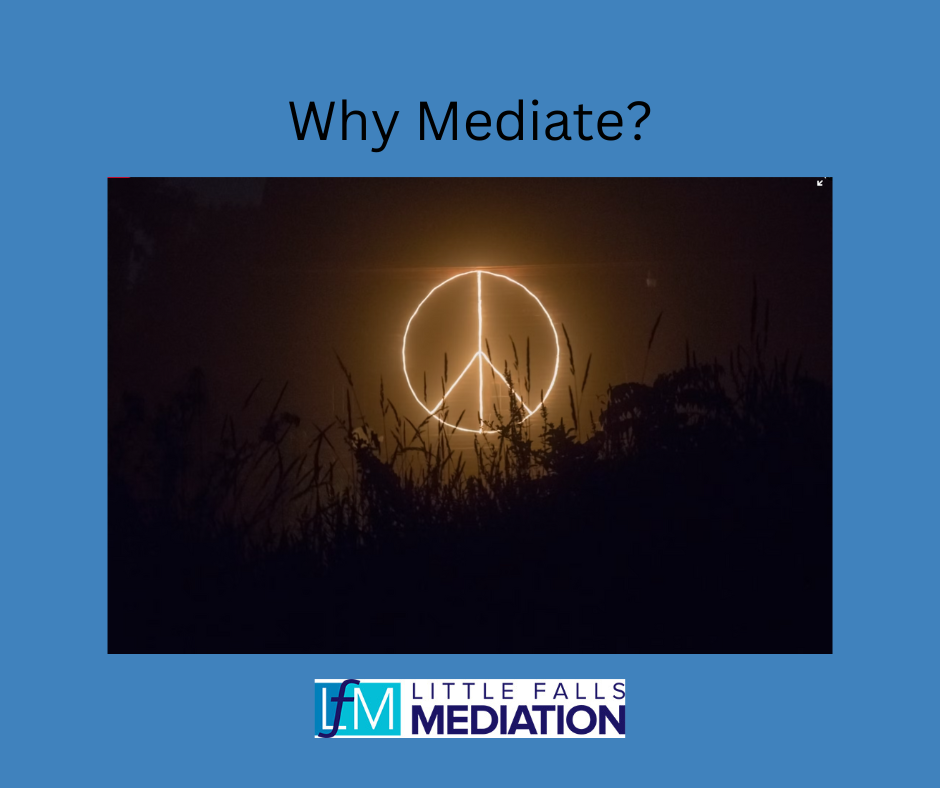 Should we mediate? I often am asked this question when I pick up the phone and speak to a prospective client. I always answer by saying that Little Falls Mediation is 100% devoted to mediation, which is one form of alternative dispute resolution. I do not litigate. Mediation fosters communication, understanding, and collaborative problem-solving, and it offers many benefits that transforms the way conflicts are resolved. Here are just some of the benefits of mediation: 1. Preserving Relationships. One benefit of mediation is the focus on preserving relationships. Unlike an adversarial approach such as litigation, where parties are pitted against each other, mediation provides a supportive and non-confrontational environment. By promoting open dialogue, active listening, and empathy, mediation helps to build understanding and empathy between parties. This cooperative atmosphere enhances the possibility of maintaining long-term relationships. 2. Empowering the Parties. Mediation empowers the parties involved by giving them control over the dispute resolution process and the outcome. Unlike traditional dispute resolution methods where decisions are imposed by judges or arbitrators, mediation allows individuals to actively participate in shaping their own outcomes. The mediator acts as a neutral facilitator, guiding the conversation and assisting parties in finding mutually agreeable solutions. By giving participants a voice, mediation promotes a sense of ownership, satisfaction, and empowerment, leading to more durable and sustainable resolutions. I always tell my clients that they are the experts on their particular situation or dispute. 3. Cost-Effective Solution. In today's complex legal systems, litigation can be a lengthy and costly process. It is not uncommon for one party to pay $100,000 to his or her divorce attorney. Mediation, on the other hand, offers a cost-effective alternative. By avoiding court fees, attorney fees, and prolonged proceedings, mediation significantly reduces the financial burden associated with conflict resolution. Additionally, mediation saves valuable time by streamlining the process, allowing parties to focus on finding practical solutions rather than engaging in lengthy legal battles. This affordability and efficiency make mediation an attractive option for individuals, businesses, and organizations seeking prompt and budget-friendly resolutions. 4. Confidentiality and Privacy. Confidentiality is a critical aspect of mediation. Mediation sessions are private and confidential, ensuring that sensitive information and discussions remain protected. Parties can openly express their emotions, concerns, fears, and aspirations without the fear of public exposure or legal repercussions. This confidentiality fosters an environment of trust and openness, facilitating more honest and productive dialogue between the parties. The privacy aspect of mediation can be particularly beneficial for resolving personal, family, or business disputes where preserving reputation and maintaining confidentiality are of utmost importance. 5. Creative and Tailored Solutions. Mediation encourages creative problem-solving by allowing parties to explore a wide range of possibilities. Unlike court-imposed decisions, mediation enables parties to devise unique and tailored solutions that suit their specific needs and interests. This flexibility allows for more innovative and mutually satisfying outcomes. By brainstorming and evaluating various options, parties can reach resolutions that may not have been possible through traditional legal processes. This collaborative approach encourages win-win scenarios, where both parties feel that their concerns have been addressed. Mediation offers numerous benefits that go beyond traditional adversarial approaches. By fostering collaboration, preserving relationships, empowering the parties, and providing cost-effective and confidential solutions, mediation transforms the way conflicts are resolved. Its emphasis on creative problem-solving and tailored outcomes ensures that the parties, and not a judge or an arbitrator, control the decision-making process. I had the pleasure of speaking to American University's Intro to Law Class recently, led by Professor Matthew Pascocello. As an icebreaker, we began with three role play exercises. Sandy and Al have broken up and they need to divide up their stuff, including a TV and DVD deck. Eight student volunteers participated (three Sandys, three Als, an arbitrator, and a mediator). The first role play was a negotiation with no third party, the second was an arbitration with the addition of an arbitrator, and the third was a mediation with the addition of a mediator. The purpose of the role plays is not to teach the students how to negotiate, arbitrate, or mediate, but rather to experience the differences and to understand that each process can produce a different outcome.
I also discuss in my remarks the differences between negotiation, mediation, arbitration, collaborative law, and litigation, as well as how to address emotion in cases that are highly charged. Last, I talk about the importance of being prepared in advance for a dispute that may arise by thinking about what method of dispute resolution should be used. Put specific language in business and employment contracts and prevent disputes from escalating by the use of interest based negotiation. Should a dispute intensify, I recommend that mediation be used to resolve and settle the dispute rather than adversarial methods. Here is a summary of what I like to call the ladder of dispute resolution: Mediation
Arbitration
Collaborative Law
Litigation
Reprinted from Harvard Law School's Program on Negotiation's Daily Blog by Katie Shonk, April 17, 2023. See also: www.pon.harvard.edu/daily/conflict-resolution/how-to-manage-conflict-at-work/ Sooner or later, almost all of us will find ourselves trying to cope with how to manage conflict at work. At the office, we may struggle to work through high-pressure situations with people with whom we have little in common. We need a special set of strategies to calm tempers, restore order, and meet each side’s interests.
The following three strategies will help you learn how to manage conflict at work. 1. Put formal systems in place. Conflict in the workplace often arises when resentment, anger, and other negative emotions are left to fester. An accidental slight can lead into a full-blown dispute if the parties involved fail to address it explicitly. As a consequence, workplace conflict is often managed one dispute at a time, an approach that is inefficient and costly. In recent years, organizations seeking to determine how to manage conflict at work increasingly have recognized the benefits of putting in place a formalized system for addressing conflict in the workplace. In an article in the Negotiation Briefings newsletter, Harvard Law School professors Frank E. A. Sander and Robert C. Bordone recommend that organizations engage in dispute system design—the process of diagnosing, designing, implementing, and evaluating an effective method of resolving conflicts in an organization. Those with basic experience with dispute-resolution processes such as negotiation, mediation, and arbitration, should be able to help their organization establish a dispute-resolution process. One of the main goals of dispute system design, or DSD, should be to support low-cost, less invasive approaches to managing workplace conflict before moving on to more costly, riskier approaches. For example, an organization might encourage or require employees in conflict to engage in mediation before moving on to an arbitration hearing. In addition, write Sander and Bordone, employees should be able to tap into the dispute-resolution process at different points throughout the organization—for example, through their supervisor, an HR staff member, or some other leader—lest they avoid the system due to distrust of one person in particular. Setting up a dispute system can be a complex process, but it will almost inevitably promote a more efficient means of managing workplace conflict than a case-by-case approach. 2. Promote better feedback. Workplace conflict often arises because co-workers have difficulty giving one another effective feedback, or any feedback at all. When we fail to let people know how they can improve, our frustration grows as their mistakes mount. Similarly, if we give unconstructive feedback—feedback that is vague, very negative, or too personal—we can create destructive workplace conflict. We need to learn to give more effective feedback and teach others in our organization to deliver meaningful and useful feedback as well. People who give good feedback ask questions, stay positive, give details, and describe how the situation makes them feel, writes Program on Negotiation managing director Susan Hackley in Negotiation Briefings. Leaders also need to make it easy for people to raise concerns. In their 2014 book Thanks for the Feedback: The Science and Art of Receiving Feedback Well, Douglas Stone and Sheila Heen offer advice on accepting feedback in a constructive manner—even when the feedback isn’t delivered constructively. We all need to learn to identify personal triggers that cause us to take perceived criticism personally, for example. 3. Focus on the problem, not the people. When deciding how to manage conflict at work, try to focus on the problem rather than the personalities involved, recommends Hackley. Because conflict tends to promote competition and antagonism, you should strive to frame the situation in a positive light. For example, focus on the potential benefits to the organization if you are able to resolve the workplace conflict rather than on the potential negatives if you have difficulty doing so. In addition, when dealing with conflict at work, remember that people tend to view conflicts quite differently, based on their individual perspective. Our perceptions of what went wrong tend to be self-serving. With each person believing he or she is “right” and the other person is “wrong,” it’s no wonder conflicts often fester in organizations. For this reason, it’s crucial to start off your workplace conflict resolution efforts by taking a joint problem-solving approach. Ask open-ended questions and test your assumptions, advises Hackley. Make sure that each party has ample time to express his or her views without interruption. When figuring out how to manage conflict at work, we need to remember the importance of exploring the deeper interests underlying the other party’s positions. When you listen closely, you will go a long way toward building trust and resolving difficult situations. 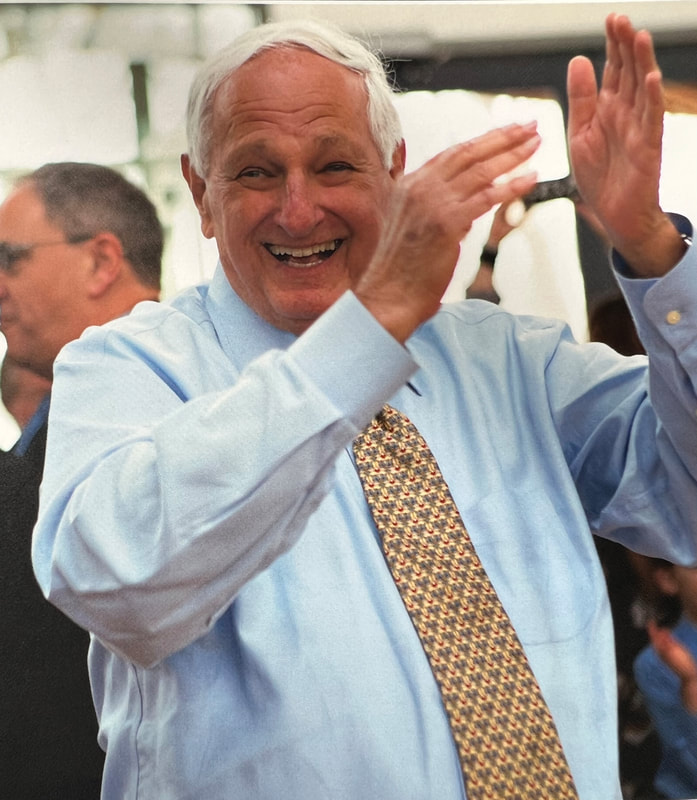 Joel and I spent the entire month of February in a little two bedroom condo that we rented by the Pacific Ocean in La Jolla Cove in San Diego, California. We worked remotely Monday through Thursdays and took Fridays to explore the area, hike, and spend time outdoors. As soon as we touched down in San Diego on February 1st, my phone blew up with texts. My 88 year old high energy and extroverted (and fully vaccinated) father had tested positive for Covid. He retired from his legal career at age 85 and started a new career as a journalist. Just last year he traveled alone to Israel to conduct interviews for an article he was writing for the Sarasota Herald-Tribune. I ended up travelling by red eye from San Diego to Tampa on February 11th to visit him in a Largo, Florida hospital for a few days and meet up with my siblings Bruce and Samantha. Bruce flew in from Buffalo, N.Y. and Samantha flew in from Tenafly, N.J. Dad had a rare auto immune disease, and my siblings and I did our best to advocate for him, coordinate his care, and communicate with our stepmother who was in Sarasota. He had been warned by his doctors to avoid Covid at all costs due to the auto immune disease. I quickly recognized that my brother, who is in sales, had the people skills we needed to navigate many of the challenges we were facing in the hospital. One day, when we took a few minutes to grab Lebanese food near the hospital, my brother put the owner of the restaurant in Largo, Florida on the phone with his friend, the owner of a Lebanese retaurant in Buffalo, New York and they chatted for quite a while. Another night, when we grabbed dinner late one night on Super Bowl Sunday at a restaurant close to the hospital, my brother became best friends with our waiter. And of course he quickly learned all of the first names of the hotel staff where we stayed and their children's names. My brother used these people skills as we tried to get the attention of the various doctors treating my father, including a pulmonologist, rheumatologist, attending physician, and infectious disease doctor. My sister, meanwhile, had an infinite amount of patience with everyone. She was also quite practical and had brought her laptop so that we could fill out endless forms to hire an aide for my father at night. I took on the role of information gatherer, detail person, and note taker as we tried to reach out to people who could help us and also determine next steps for our father's care on a daily basis. I recognized that we were a strong sibling team as we worked together on very little sleep. My father was transferred from a hospital near his Sarasota home to a Largo hospital more than an hour away from his home on February 9th. The Largo hospital had told us that they had a drug that he needed to put his auto immune disease back in remission and staff who were certified to administer the drug. Time was of the essence. Unfortunately, the hospital did not in fact have the drug. The attending doctor promised that we would have the drug by Monday, February 13th. The infusion that we thought might save his life was scheduled for 1:00 pm that day. Mary Ellen, a nurse who was trained and certified in chemo infusion, was the nurse who was to give the infusion over a three to four hour period and monitor my father in the event he had a reaction. The drug did not arrive, and Mary Ellen’s shift ended at 7:00 pm. No other nurses were trained and certified to give the infusion. My brother gathered the nursing supervisor, Chris, went down to the hospital pharmacy, got the attending doctor, Dr. Miller, on the phone along with the pharmacy director, and demanded in his magical way that we track down the delivery driver who had the drug. The drug finally was delivered to the hospital but there was no chemo infusion nurse to administer it. We were up in arms since this drug was the only hope to save our father's life. The drug was eventually administered the next day. My brother then put together a plan on February 20th for an Angel medical flight to fly my father from Largo Hospital to the Cleveland Clinic. My father's rheumatologist was at the Cleveland Clinic and my father's wish for his survival was to go there. The cost was $27,000 which quickly grew to $40,000 given that he was still testing positive for Covid on February 21st. Also, his oxygen levels were decreasing in part because his lungs were damaged by Covid. He would need to fly in an isolation pod. On February 21st, the attending doctor told us that he was suddenly declining and would not be able to fly to Cleveland Clinic. Hospice care started on February 22nd at the Largo Hospital and he died after a couple of hours. I've been reflecting on the past month and am in awe of watching my siblings do the very best that we could do to try to manage this terrible situation. One of the hardest parts of this story was watching our father have adverse side effects from the high levels of steroids that were part of his treatment. I used my mediator skills of summarizing, paraphrasing, and reframing so that all of us who were on daily phone calls with nurses or doctors understood the information we were receiving. I wrote everything down and kept a file because I remember and process information best that way. We had to be zealous advocates for my father rather than take the neutral position I need to take as mediator. I was aware of the emotions that we were feeling of shock, anger, fear, grief, loss, and sadness and acknowledged them. We did not sleep well or eat much during this ordeal and we knew that we had to take care of ourselves so that we could manage this situation. Paul Rudd recently said that "when you lose a parent, the world is off its axis and it never rights itself..." and that is how I feel. Our mother died in 1992. We have lost both of our parents. We are devastated and life will never be the same.  Thanks so much to Shoutout SoCal for interviewing me about my business, Little Falls Mediation, and my career as a lawyer and mediator. I am looking forward to working remotely from southern California in a couple of weeks! Hi Ellice (Lisa), is there something that you feel is most responsible for your success? One factor is kindness. The other two factors are rapid response and competence. When a potential client first contacts me, he or she is typically under great stress because there is some kind of dispute that needs to be discussed. It could be that the client needs to get divorced or is a business partner having issues with the other business partner. I always get back to people right away, even if it’s just to say that I received the text or the email or the voicemail and I will be back in touch soon. Let’s talk shop? Tell us more about your career, what can you share with our community? I started off as a lawyer, working in the executive branch at the U.S. Office of Personnel Management (OPM) and then in the U.S. Senate for Senator Ted Stevens from Alaska. Then I became a lobbyist and Washington counsel for the American Medical Association. After I had 3 kids, I trained in 2010 to be certified in the state of Virginia as a general and family mediator. I was a mediator in D.C. Courts for many years handling court referred cases in the Small Claims Division, as well as the Family and Judge in Chambers Programs as well. I started my business in 2015 and began to teach Alternative Dispute Resolution each Fall and Mediation each Spring at George Mason University’s (GMU) Antonin Scalia Law School. When I needed help, I reached out for it. I never took a finance class in college or law school so I knew I needed a bookkeeper and accountant. My husband is a software architect and he showed me how to build a website. I joined several entrepreneur groups — Arlington Women Entrepreneurs, Mothers of N. Arlington Business Entrepreneur Network, and Women Who Mean Business. These groups are so much fun. We are all there for each other to collaborate and support each other, share our stories, have some laughs, and learn from each other. At first, I would agree to meet with clients when I was training to be a mediator whenever the opportunity arose. If a client wanted to meet at 8 pm 45 minutes away from my home, I would do it. Later on, when I established my own business, I liked having control over my schedule. I don’t see clients at night because I know that I get the best results when clients are high energy, well rested, and not hungry. I also know that I am at my mediator best during the day and not at night. Let’s say your best friend was visiting the area and you wanted to show them the best time ever. Where would you take them? Give us a little itinerary – say it was a week long trip, where would you eat, drink, visit, hang out, etc. I live in the D.C. area so there are always lots of fun places to take people. It depends on time of year. For years we belonged to a boat club so in the summer time, I would always reserve a motor boat either from the Wharf in DC or in Annapolis, Maryland and we would spend a beautiful sunny, blue sky day on the water with a picnic. I would definitely choose an itinerary tailored to a specific visitor. Most visitors love a boat ride. In the fall, I would take visitors to Shenandoah National Park (SNP), which is just 90 minutes from our home in northern Virginia. There are lots of orchards and vineyards along the way, so a beautiful waterfall hike in SNP would likely end with a little apple picking and charcuterie, as well as wine tasting on the way home. I would arrange for a tour of the Supreme Court, House, Senate, and Capitol. We would visit the National Mall/Park Service and see the beautiful Washington Monument, WWII memorial, and Lincoln Memorial, along with the Roosevelt (FDR) Memorial. If there was a great play or musical at the National Theater or Kennedy Center, I would take them there. And there is often a great outdoor concert at Nats Park or Wolftrap Center/National Park for the Performing Arts. There are many concert venues around the DC area as well, so I likely would find some great music somewhere. In the winter, we would likely watch a Buffalo Sabres/Washington Capitals game in DC at Capital One Arena and go ice skating in the Sculpture Garden at the National Gallery of Art. Last, we would walk around interesting neighborhoods such as Dupont Circle, Logan Circle, Shaw, Georgetown and visit farmers’ markets and holiday markets along the way. In the springtime, we would get up early to see the cherry blossoms around the Tidal Basin and go up to Eastern Market, a historic outdoor market open year round. Who else deserves some credit and recognition? My husband, for insisting that I should start my own business. My friend C. Lee Cawley, who is a business owner herself. She was the first person I called when I was thinking about starting my business. The group Arlington Women Entrepreneurs, founded by Karen Beauregard Bate, which expanded to become Awesome Women Entrepreneurs. And all the other women entrepreneurs I have met along the way who have mentored me. Website: www.littlefallsmediation.com Instagram: https://www.instagram.com/littlefallsmediation/ Linkedin: https://www.linkedin.com/in/ellice-lisa-halpern-5b81726/ Twitter: https://twitter.com/ElliceHalpern Facebook: https://www.facebook.com/littlefallsmediation Image Credits Tim Coburn Photography Happy Holidays! I wanted to share this great article "A Therapist's Guide to Staying Calm During Family Holidays" written by Carolyn Steber on November 17, 2022. The article was published in Bustle.
www.bustle.com/wellness/how-to-stay-calm-during-holidays-family Click on the link above to read the article. Here are the 17 tips included in the article:
May your holidays be filled with love and light! |
AuthorEllice Halpern, J.D., is a Virginia Supreme Court certified general and family mediator. Archives
June 2024
Categories |
Copyright © 2015 www.littlefallsmediation.com

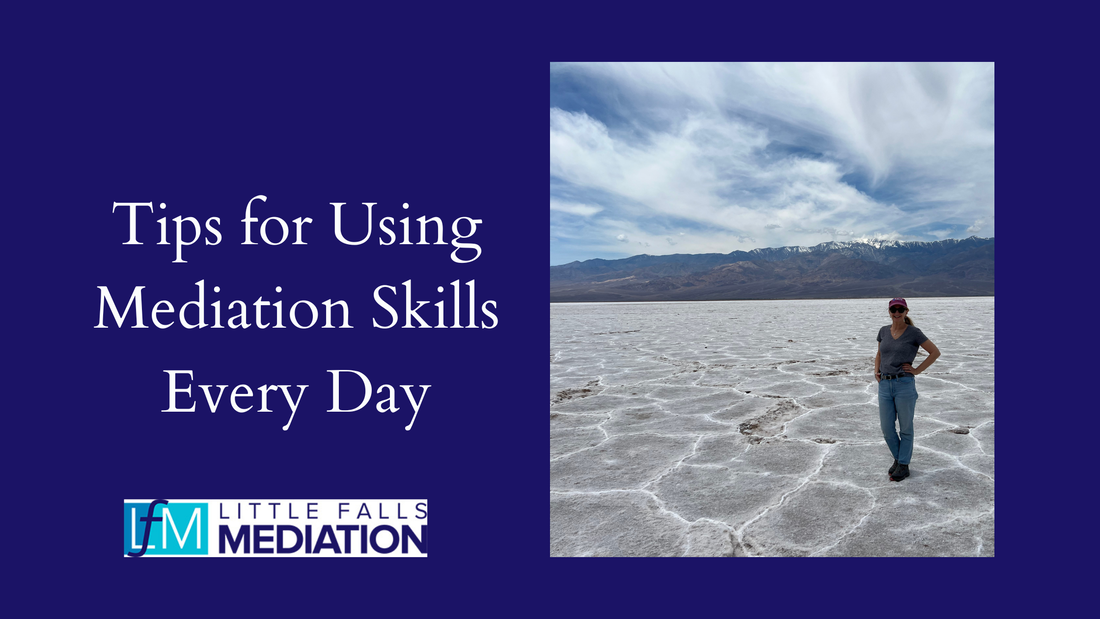
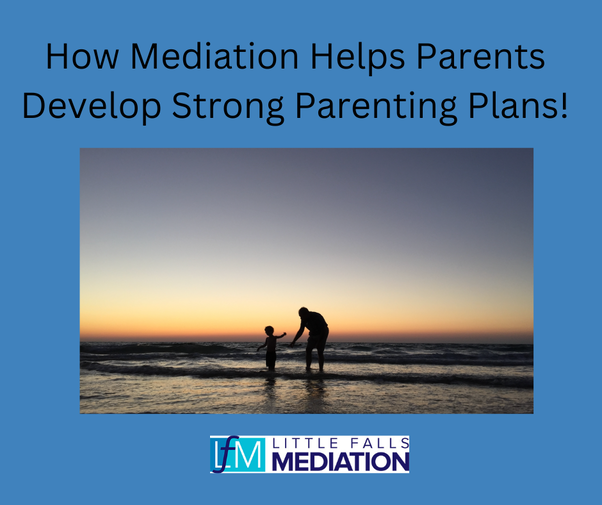
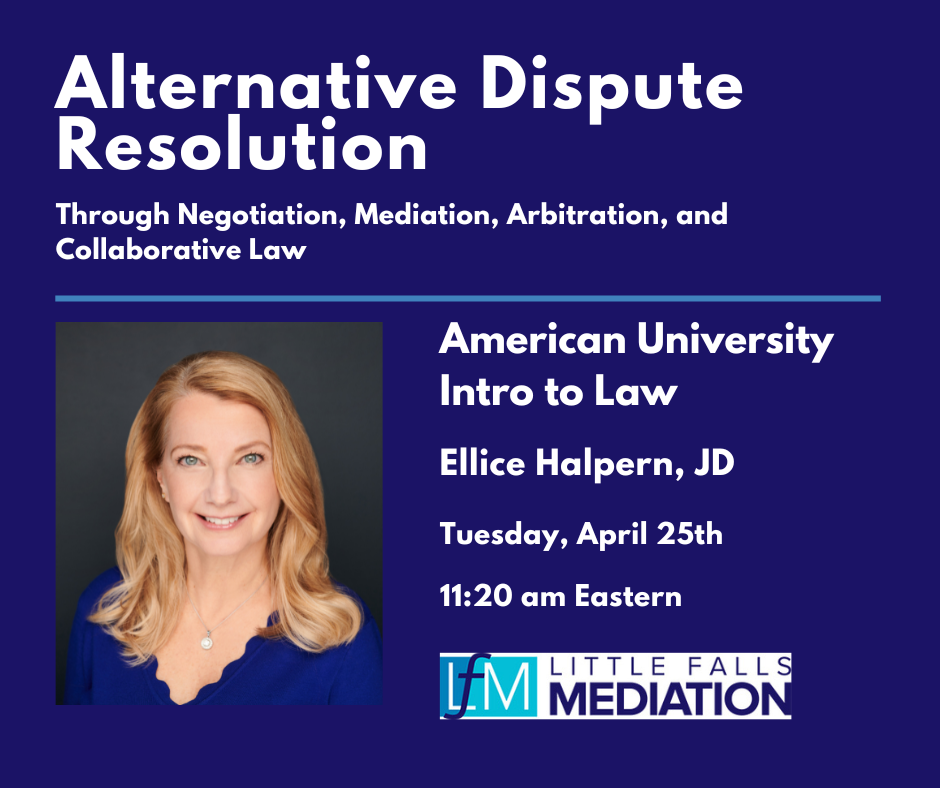

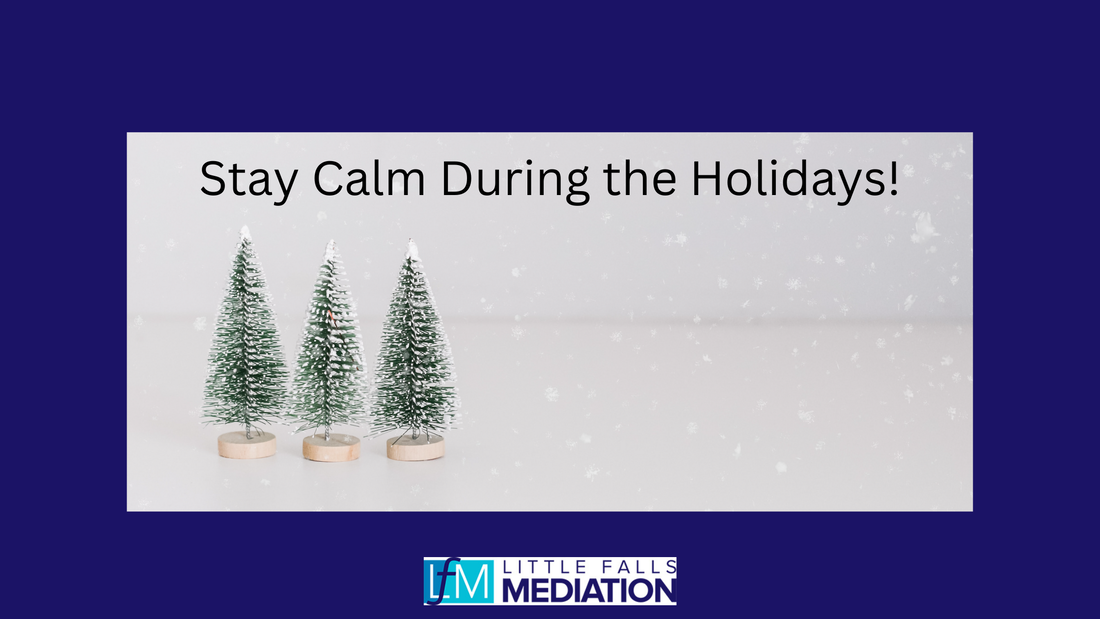
 RSS Feed
RSS Feed